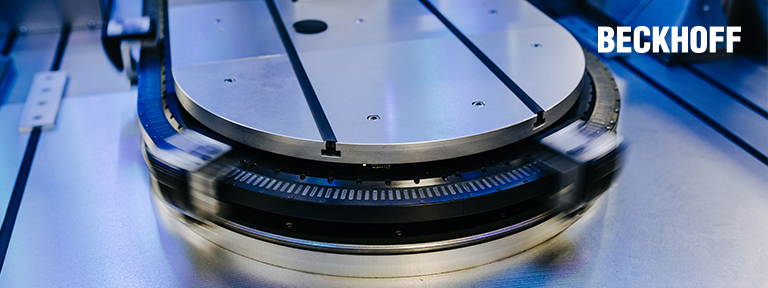XPlanar Transports Workpiece during Plasma Surface Treatment Process
- Jeff Johnson

- Apr 5, 2021
- 3 min read
Updated: Jul 19, 2023
Floating planar system from Beckhoff helps Plasmatreat simplify transportation of sensitive workpieces
Plasmatreat GmbH, a Steinhagen, Germany-based manufacturer of plasma systems for high-efficiency surface treatment and environmentally friendly production processes, recently unveiled a new plasma treatment unit. A key innovation with this treatment unit is that it uses XPlanar, a planar motor system from Beckhoff Automation, to transport workpieces with high precision and flexibility. XPlanar replaces prior systems used to move often sensitive workpieces such as PCBs and eliminates the need to install complex six-axis robots and linear motors.
The plasma treatment unit can surface-treat a variety of material samples in a two-stage process, according to Jochen Stichling, Head of Design at Plasmatreat. “During the first stage, the substrate is moved under a nozzle for cleaning and activation. During the second, a separate nozzle applies a functional coating,” Stichling says. This, he explains, is where the company focused its innovation efforts: “We wanted a fast, fully programmable, wear-free system to transport the workpieces. And when it came to custom-programming of tracks and travel there was no real alternative to XPlanar.”

Planar motor system with floating movers
The XPlanar system consists of planar tiles that can be arranged in any pattern, combined with contactless movers that float over them and provide exceptionally fast, flexible and precise positioning. The movers operate jerk-free and are capable of traveling at speeds of up to 2 m/s; they can also accelerate at 1 g and be positioned with a repeatability of 50 µm – silently, and without wear or abrasion. The system not only supports movement within the x-y space, but it also provides additional functions to allow mover positioning with up to six degrees of freedom when necessary:
raising and lowering by up to 5 mm (unloaded)
tilting by up to 5° when transporting and handling liquids
rotation of 360° over all planar tiles
The XPlanar system in the Plasmatreat machine consists of six 240 x 240 mm planar tiles and a single planar mover.
XPlanar increases flexibility while reducing mechanical complexity

A major advantage Plasmatreat gained by implementing XPlanar is that the plasma jets used to treat surfaces no longer need to be moved and, as a result, can now be installed in fixed mountings. The jets are complex, both mechanically and electrically, and the ability to move the workpieces rather than the plasma jets themselves reduces wear to the feed lines. Stichling sees additional benefits from the increased flexibility, too.
“We can attach a variety of material samples to the mover for treatment using just simple adapters," he says. "We can easily add processing stations alongside the plasma jets – markers for good parts, for instance, or optical sensing heads to conduct full part inspections – and carry workpieces to them flexibly as needed. And XPlanar’s rapid acceleration also lets us move material samples at high speeds; with thin samples, for instance, this helps minimize treatment time with the fixed jet.”
According to Stichling, XPlanar’s functional benefits are proving valuable in a range of applications: “Conventional setups use a six-axis robot or linear motors to move a plasma jet around a stationary workpiece. From a cost perspective, XPlanar comes in somewhere between linear-axis and robotic systems. With flat parts that don’t require much vertical travel on the z-axis, where robotic systems are usually ideal, XPlanar offers an excellent alternative to gantry-type systems. XPlanar’s advantages in terms of lack of wear, easy cleaning and clean-room compatibility also play out here.”
Optimize machine designs with XPlanar

For Stichling, XPlanar has the potential to optimize plasma surface treatment in two key areas, going forward: direct integration of in-line testing for full inspections during the treatment process, and custom-programmable mover travel routes for end customers.
Another advantage for Plasmatreat was that it took less than two months to integrate the XPlanar system into its machine – not least because Beckhoff was quick to supply the 3D data and the electrical connection information that enabled the company to rapidly incorporate the XPlanar starter kit into its machine design. XPlanar, according to Jochen Stichling, has proved to be both robust and reliable. And another advantage, he points out, is that the entire plasma treatment cell has now been fully automated using PC-based control, making it a complete system solution from a single source.
Are you ready to open up new possibilities in machine design with XPlanar? Contact your local Beckhoff sales engineer today.

Jeff Johnson is the Mechatronics Product Manager for Beckhoff Automation LLC.
A version of this article previously appeared in Automation World.



Comments